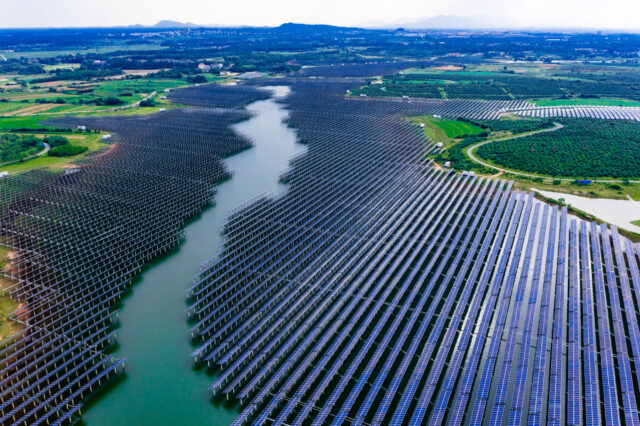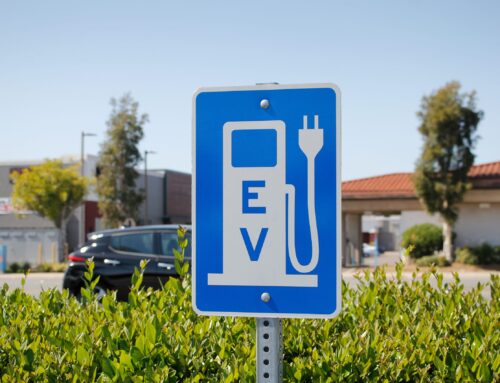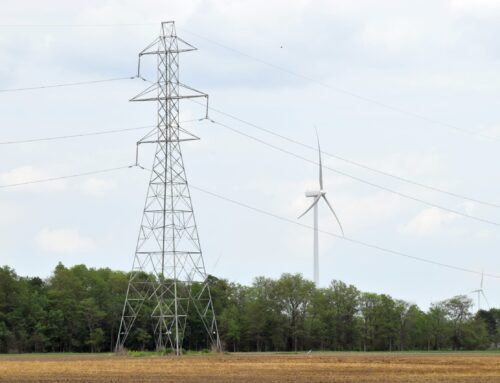Analysis shows that China’s emissions are dropping due to renewables
May 15, 2025
It’s the country’s first one-year emissions decline that’s not linked to economic issues.
Credit:
Yangna
China has been installing renewable energy at a spectacular rate, and now has more renewable capacity than the next 13 countries combined, and four times that of its closest competitor, the US. Yet, so far at least, that hasn’t been enough to offset the rise of fossil fuel use in that country. But a new analysis by the NGO Carbon Brief suggests things may be changing, as China’s emissions have now dropped over the past year, showing a one percent decline compared to the previous March. The decline is largely being led by the power sector, where growth in renewables has surged above rising demand.
This isn’t the first time that China’s emissions have gone down over the course of a year, but in all previous cases the cause was primarily economic—driven by things like the COVID pandemic or the 2008 housing crisis. The latest shift, however, was driven largely by the country’s energy sector, which saw a two percent decline in emissions over the past year.

China’s emissions have shown a slight decline over the last year, despite economic growth and rising demand for electricity.
Credit:
Carbon Brief
Carbon Brief put the report together using data from several official government sources, including the National Bureau of Statistics of China, National Energy Administration of China, and the China Electricity Council. Projections for future growth come from the China Wind Energy Association and the China Photovoltaic Industry Association.
The data indicate that the most recent monthly peak in emissions was March of 2024. Since then, total emissions have gone down by one percent—a change the report notes is small enough that it could easily reverse should conditions change. The report highlights, however, that the impact of renewables appears to be accelerating. The growth of clean power in the first quarter of 2025 was enough to drive a 1.6 percent drop compared to the same quarter a year before, outpacing the overall average of a one percent decline.
In total, the power sector saw a 5.8 percent drop in emissions compared to the first quarter the year before, despite seeing demand for power rise by 2.5 percent. In fact, Carbon Brief concludes that the rise in production from clean power was greater than the average rise in demand over the past 15 years. This suggests two things: that any failure to meet rising demand via renewables will be due to unusual and temporary circumstances, and that renewables will start displacing fossil fuel generation as things move forward.
That said, China faces some considerable challenges to dropping its overall emissions. The new report notes that the use of coal as a feedstock for the chemical industry has risen considerably. This frequently involves the extraction of coal’s hydrogen for use in other chemicals, leaving the carbon to be emitted as carbon dioxide. The use of natural gas for applications other than generating electricity has also risen considerably in recent years. On the plus side, a slowdown in construction have caused emissions from cement production to decline dramatically (down by a quarter since 2021).

Newly installed wind and solar dominate the electricity produced by recently completed power sources in China. And growth is set to continue.
Credit:
Carbon Brief
Other factors, such as the tariff war with the US, may also affect matters in the near term. There’s also a change in government policy scheduled that will change the way renewable power is paid for, eliminating a guaranteed floor on its prices. That’s currently causing a rush to complete renewable projects. But projections for the future suggest that growth will hold steady for the next couple of years, meaning that power sector emissions are likely to continue dropping.
Search
RECENT PRESS RELEASES
Related Post






